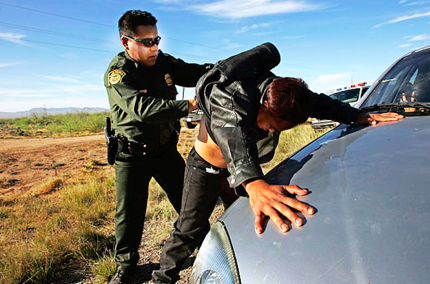Blog Post 4
Blog Post 4
First multimodal text: Immigration and Refugee Protest

I would pull this multimodal text up on the smart board for the whole class to see as we discuss the immigration and refugee crisis happening all over the world as part of a social studies lesson. The author of this photo is Immigration News, which is an online news source based in Australia. The purpose that the author of this photo illustrates is a protest happening in Australia which is fighting against an immigration ban that may occur in Australia. Many people are opposed to this immigration ban because of how much immigrants have positively contributed to Australia’s economy. The genre of this photograph is a protest in a political context, where the audience is Australians who may not know how much refugees and immigrants have built up the economy and allow it to remain stable and functioning. The author wants to persuade the audience to be aware of this ban and the negative impact this refugee ban would have on Australia’s economy.
The design choices the photographer uses to get the message across are strategic and accurately convey the context in which this photo was taken. The emphasis of this photo is on the protest sign that reads, “TREATING REFUGEES AS THE PROBLEM IS THE PROBLEM.” With the people writing with calk underneath the sign and the smiling women holding the sign, the author frames the sign with protesters to focus the emphasis on the sign and the type of protest this is. The sign is written in contrasting colors (black and red) to strongly convey the message of this protest: treating refugees like they are the issue is creating the issue in itself. Immigrants and refugees are helping to stabilize the economy and without them the economy would break down. The red lettering of the “IS THE PROBLEM” draws the attention of the reader to the message that problems are being created when human beings are being treated unfairly for unjust reasons. The way the photograph is organized in such a way that it displays the people framing the sign, which demonstrates that we are all human beings that should be fighting for the dignity of one another. There is a boy with darker skin drawing next to a girl with lighter skin and dark hair both crouching down on the same level drawing with chalk to promote their cause. This alignment of the people also contributes to the message that as human beings we are all one and should treat each other as equals. Although the sign is a little bit zoomed out to have space for the people, the proximity of the sign and the wording on the sign make it evident that the words on the sign are the focus of the multimodal text in the rhetorical situation.
This photograph and the elements that make up this photograph are meaningful to the students and conveys an important message. By demonstrating the types of events that take place at a protest, when showing this picture to my students they will understand that a protest is a peaceful gathering of people where they promote causes. This photograph communicates to the audience that when people in our world experience injustices and inequality, then citizens unite as one to try and get their voices heard and change the government policies that infringe on the rights of human beings.
Source: “Australia.” Immigration News. N.p., n.d. Web. 27 Feb. 2017. <https://immigrationnews.com/category/australia/>.
Multimodal Text #2:
The poem “Leave of Absence” by James E. Schevill.

During a social studies unit of World War II or a literature unit on poetry, I would print this poem off the internet and pass around copies so each student receives one and can mark it up as we read it together and have a class discussion about it after reading. The author of this poem, James E. Schevill, is an American world-renowned poet who experienced some of the tragedies occurring in Germany during the Nazi Regime in 1938. Although he was not a prisoner at Auschwitz, he gained a sense of the terror the prisoners felt every day and decided to write a poem about the day Auschwitz was liberated as well as how the people felt outside of the prison. Schevill’s purpose in writing this poem is make known to the rest of the world what the prisoners of Auschwitz experienced and what it felt like to finally be free of the barracks and returning to their homes. The audience of this poem is for all people, young and old, who may not have ever tried putting themselves in the shoes of the prisoners and thought about what life would be like after being rescued from those horrendous conditions. The genre of this poem is a war poem in the context of World War II in the Auschwitz concentration camp on the day of liberation.
The emphasis of this poem is in the second stanza on the seventh and eighth lines where Schevill writes, “Walk up to the mirror and say hello/ but the shine in your face is not as before.” This is the central message of the poem that the author wants the audience to understand. Here, he reveals to the audience that after prisoners were liberated from the concentration camp, they were not the same people as before; they have experienced tremendous tragedy which they will never forget and most-likely not recover from. Because the lines do not rhyme, the words are the contrasting elements of this multimodal text. The poem is organized so that the first two stanzas have nine lines and the final stanza only has six. This poem demonstrates to the audience that poems do not have to rhyme or possess a certain number of lines, which is important for my students to know about poems. The structure of the poem is aligned to the left because it reads like a book, but is in fact a poem. The proximity of the words of the poem are distant and small, conveying the message that many of the people who endured Auschwitz were forgotten after they were liberated, but for them the nightmares continue to face them every single day.
This poem is extremely meaning because it allows for the audience, in this case my students, to understand what the prisoners in concentration camps experienced even after they were rescued. I want my students to be able to read this poem and put themselves in the shoes of the speaker. Although the author was not a prisoner of WWII, he is knowledgeable enough to share his thoughts and emotions on the subject as well as speak for the prisoners who cannot share their experiences. Also, I want my students to understand that poetry does not have to possess a certain rhyme and rhyme scheme, but can simply tell a story in a few powerful words.
Source: Schevill, James E. “Leave of Absence by James E. Schevill.” Poetry Foundation. Poetry Foundation, n.d. Web. 27 Feb. 2017. <https://www.poetryfoundation.org/poetrymagazine/browse?contentId=24068>.
Multimodal Text #3: Advertisement for Global Warming

I would present this billboard to my class during a science unit discussing global warming. The author of this advertisement is the organization WWF, which is an organization that works in over 100 countries to protect the future nature of our planet. They promote the use of clean energy, recycling, and animal protection in order to conserve the natural beauty of our planet. They advertise against global warming because this is a man-made issue and they encourage the audience to do their part to act in avoiding destroying our planet, which is their purpose. The audience of this advertisement, which is a billboard on a highway, is all people driving on the highway who will see it as well as advocates for WWF and a cleaner planet. The genre of this advertisement is going against global warming in the context of doing our part to keep the global temperatures down; essentially, this advertisement demonstrates what is currently happening to our planet.
The emphasis of this ad is on the picture of earth sitting on top of an ice cream cone that is melting. The author assumes that audience knows what happens when an ice cream cone is left in a warm area for a long time: the contents melt down sides of the cone. The black background of the advertisement contrasts the colors of the earth and the cone, immediately drawing the attention to what is happening in the center of the picture; also, the radiant white-ish circle coming off the focus draws in the attention of the audience. The proximity of the cone and earth melting are right in the center alignment of the advertisement, which makes it clear that this is the focus and this is happening to our planet when we do not use green energy.
This multimodal text is meaningful to my students because rather than just reading about global warming from a textbook, this image represents something that is familiar to them where they can put an image to the concept of global warming. When teaching this lesson in my science classes, I would use this advertisement to strongly emphasize that global warming is occurring every day and there are actions we can take as inhabitants of this earth to attempt to keep the temperatures down.
Source :”Endangered Species Conservation.” WWF. World Wildlife Fund, n.d. Web. 27 Feb. 2017.












You must be logged in to post a comment.